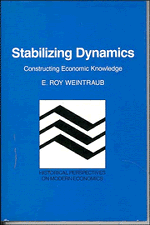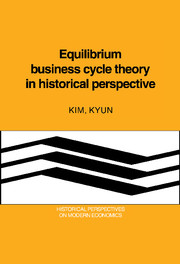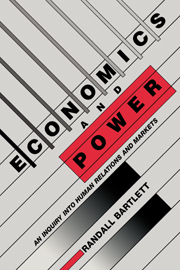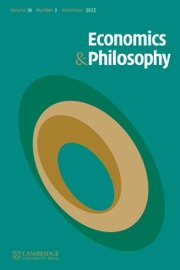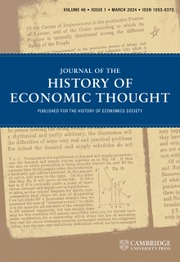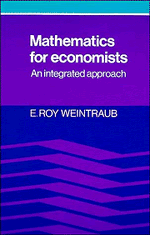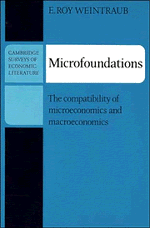Stabilizing Dynamics
Today, economic theory is a mathematical theory, but that was not always the case. Major changes in the ways economists presented their arguments to one another occurred between the late 1930s and the early 1950s; over that period the discipline became mathematized. Professor Weintraub, a noted scholar of the modern history of economic thought, argues that those changes were not merely cosmetic: The mathematical forms of the arguments significantly altered the substance of the arguments. Stabilizing Dynamics is particularly concerned with the ways in which the rich and confusing talk of the 1930s evolved, over a fifteen-year period, into technical analysis of some mathematical structures. The author describes the context for the history of that change, locating it in the broader intellectual currents, and shows how the history of modern economics can be seen as a confluence of several disparate traditions. Historiographically, this book offers one of the first constructivist accounts of modern economic analysis.
Reviews & endorsements
"The title of Roy Weintraub's pioneering, thought-provoking book has an intentional double meaning, describing both his subject and thesis...Weintraub's demonstration that there is no single 'true' interpretation of this episode in the history of economic thought also raises a question: Why should we care more about his interpretation than any other? It is precisely because he does not answer this question that his case for alternative socially constructed interpretations is convincing....challenging and persuasive." Journal of Economic History
"Stabilizing Dynamics is clearly a very important contribution to the literature [not only] in the purely historical sense...[but because it] is the first major constructive study in the history of economic thought." Economic Journal
"The virtues of this book are at least three. It is very well-written; it offers a reasonably comprehensive and very interpretive history of dynamic analysis...and it offers quite a persuasive example of studying economic ideas in their original time and place. It is worth buying, reading, and recommending." The Philosophy of Science
"An important contribution to our understanding of the history of general equilibrium analysis...and a manifesto for a particular way of doing history." Journal of the History of Economic Thought
"Weintraub's analysis of economics as discourse--of economics not as truth but as the imposition of discursive order-- is brilliant." Warren Samuels
Product details
May 2012Adobe eBook Reader
9781139242806
0 pages
0kg
This ISBN is for an eBook version which is distributed on our behalf by a third party.
Table of Contents
- Acknowledgments
- 1. Introduction
- Part I. From Dynamics to Stability:
- 2. Economists on dynamics and stability in the 1930s
- 3. The foundations of Samuelson's dynamics
- 4. Liapunov theory and economic dynamics
- Part II. From history to Interpretation:
- 5. The brittleness of the orange equilibrium
- 6. Stabilizing dynamics
- 7. Surveying dynamics
- 8. Conclusion
- Notes
- References
- Index.

